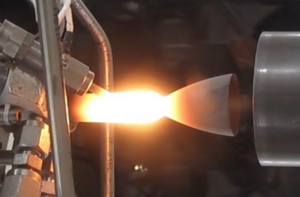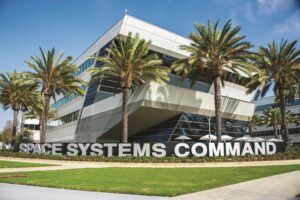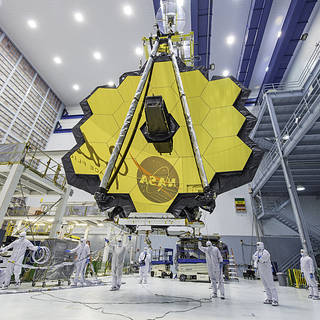Comet 67P's abundant oxygen more of an illusion, new study suggests
Tuesday, 15 March 2022 05:01 When the European Space Agency's Rosetta spacecraft discovered abundant molecular oxygen bursting from comet 67P/Churyumov-Gerasimenko (67P) in 2015, it puzzled scientists. They had never seen a comet emit oxygen, let alone in such abundance. But most alarming were the deeper implications: that researchers had to account for so much oxygen, which meant reconsidering everything they thought they
When the European Space Agency's Rosetta spacecraft discovered abundant molecular oxygen bursting from comet 67P/Churyumov-Gerasimenko (67P) in 2015, it puzzled scientists. They had never seen a comet emit oxygen, let alone in such abundance. But most alarming were the deeper implications: that researchers had to account for so much oxygen, which meant reconsidering everything they thought they MAHLI tries again on Sols 3412-3414 for detailed closeup
Tuesday, 15 March 2022 05:01 Due to an issue with the Sol 3410 and 3411 plans, parts of the Sol 3410 plan didn't execute and the planned drive did not occur. But the Sol 3409 contact science activities completed successfully, returning nice MAHLI images of bedrock.
Because the rover did not move, the high-gain antenna view of Earth is still occluded, preventing direct communication from Earth and daily uplink. So we w
Due to an issue with the Sol 3410 and 3411 plans, parts of the Sol 3410 plan didn't execute and the planned drive did not occur. But the Sol 3409 contact science activities completed successfully, returning nice MAHLI images of bedrock.
Because the rover did not move, the high-gain antenna view of Earth is still occluded, preventing direct communication from Earth and daily uplink. So we w Tiny Star Unleashes Gargantuan Beam of Matter and Antimatter
Tuesday, 15 March 2022 05:01 This image from NASA's Chandra X-ray Observatory and ground-based optical telescopes shows an extremely long beam, or filament, of matter and antimatter extending from a relatively tiny pulsar, as reported in our latest press release. With its tremendous scale, this beam may help explain the surprisingly large numbers of positrons, the antimatter counterparts to electrons, scientists have detect
This image from NASA's Chandra X-ray Observatory and ground-based optical telescopes shows an extremely long beam, or filament, of matter and antimatter extending from a relatively tiny pulsar, as reported in our latest press release. With its tremendous scale, this beam may help explain the surprisingly large numbers of positrons, the antimatter counterparts to electrons, scientists have detect Norwegian Defence Research Establishment contracts Exolaunch to launch ARCSAT
Tuesday, 15 March 2022 05:01 Norwegian Defence Research Establishment (FFI), the prime institution responsible for defence-related research in Norway, has awarded a contract to Exolaunch, a global provider of launch, in-space logistics and deployment services for small satellites, to launch its ARCSAT satellite aboard SpaceX's Falcon 9.
The teams of Exolaunch and GomSpace, the ARCSAT's satellite manufacturer, have jus
Norwegian Defence Research Establishment (FFI), the prime institution responsible for defence-related research in Norway, has awarded a contract to Exolaunch, a global provider of launch, in-space logistics and deployment services for small satellites, to launch its ARCSAT satellite aboard SpaceX's Falcon 9.
The teams of Exolaunch and GomSpace, the ARCSAT's satellite manufacturer, have jus Space Park Leicester launched by British astronaut Tim Peake
Tuesday, 15 March 2022 05:01 UK astronaut Tim Peake officially opened Leicester's pioneering space research, innovation and teaching cluster at a special ceremony on Monday.
Space Park Leicester is forecast to contribute 750m pounds a year to the UK space sector over the next decade and is expected to support more than 2,500 direct and indirect jobs in the East Midlands1.
The first British European Space Agency
UK astronaut Tim Peake officially opened Leicester's pioneering space research, innovation and teaching cluster at a special ceremony on Monday.
Space Park Leicester is forecast to contribute 750m pounds a year to the UK space sector over the next decade and is expected to support more than 2,500 direct and indirect jobs in the East Midlands1.
The first British European Space Agency Astra announces multi-launch contract and first launch with Spaceflight Inc.
Tuesday, 15 March 2022 05:01 Astra Space, Inc. (NASDAQ: ASTR) and Spaceflight Inc. ("Spaceflight"), the leading global launch services provider, has announced a multi-launch contract. The first launch under this contract is planned for March 14, 2022, with a window opening at 9:22am PDT / 16:22 UTC out of the Astra Spaceport in Kodiak, Alaska, but may be shifted to March 15, 2022 depending on conditions at the launch site.
Astra Space, Inc. (NASDAQ: ASTR) and Spaceflight Inc. ("Spaceflight"), the leading global launch services provider, has announced a multi-launch contract. The first launch under this contract is planned for March 14, 2022, with a window opening at 9:22am PDT / 16:22 UTC out of the Astra Spaceport in Kodiak, Alaska, but may be shifted to March 15, 2022 depending on conditions at the launch site. New space funding paves the way for pioneering approaches to energy, communication and resources
Tuesday, 15 March 2022 05:01 British space technology will help pioneer new approaches to energy, communications and resources, thanks to new projects from the UK Space Agency
Science and Innovation Minister George Freeman announced the 2 million pound boost for 13 new projects during British Science Week (11-20 March), which aims to inspire interest in and celebrate science, engineering, technology and maths for peop
British space technology will help pioneer new approaches to energy, communications and resources, thanks to new projects from the UK Space Agency
Science and Innovation Minister George Freeman announced the 2 million pound boost for 13 new projects during British Science Week (11-20 March), which aims to inspire interest in and celebrate science, engineering, technology and maths for peop Scientists, undergraduates team up to protect astronauts from radiation
Tuesday, 15 March 2022 05:01 Elena D'Onghia has spent her career puzzling over the behavior of the Milky Way's closest neighbors, the dwarf galaxies known as the Magellanic Clouds.
Their story is an epic tale of twirling streams of gas larger than humans can really imagine. But, like most astronomical phenomena, the Magellanic Clouds are far removed from daily life on Earth. A good 160,000 light years removed, in fact
Elena D'Onghia has spent her career puzzling over the behavior of the Milky Way's closest neighbors, the dwarf galaxies known as the Magellanic Clouds.
Their story is an epic tale of twirling streams of gas larger than humans can really imagine. But, like most astronomical phenomena, the Magellanic Clouds are far removed from daily life on Earth. A good 160,000 light years removed, in fact Agile supplies thrusters for Astrobotic, ispace and Masten lunar landers
Monday, 14 March 2022 22:16
Agile Space Industries, a Durango, Colorado company focused on in-space chemical propulsion, is additively manufacturing thrusters for robotic lunar landers being built by Astrobotic Technology, ispace and Masten Space Systems.
The post Agile supplies thrusters for Astrobotic, ispace and Masten lunar landers appeared first on SpaceNews.
DoD decommissions two missile-tracking satellites after 12 years in orbit
Monday, 14 March 2022 21:56
The two Space Tracking and Surveillance System satellites were taken out of service on March 8. They were launched in 2009 on a United Launch Alliance Delta 2 rocket.
The post DoD decommissions two missile-tracking satellites after 12 years in orbit appeared first on SpaceNews.
Launch of U.S. Space Force missile-warning satellite delayed indefinitely
Monday, 14 March 2022 20:21
The launch of a U.S. Space Force mission known as USSF-12 has been put on indefinite pause.
The post Launch of U.S. Space Force missile-warning satellite delayed indefinitely appeared first on SpaceNews.
DoD wants to change how it buys space technology – but can it?
Monday, 14 March 2022 20:00
As the Pentagon prepares for the possibility that adversaries will target national and commercial satellites, the government’s ability to adopt commercial industry’s best technologies has become a major topic of discussion.
The post DoD wants to change how it buys space technology – but can it? appeared first on SpaceNews.
NASA to Discuss Progress as Webb Telescope’s Mirrors Align
Monday, 14 March 2022 15:04 NASA will hold a virtual media briefing at noon EDT Wednesday, March 16, to provide an update on the James Webb Space Telescope’s mirror alignment.
NASA will hold a virtual media briefing at noon EDT Wednesday, March 16, to provide an update on the James Webb Space Telescope’s mirror alignment. US astronaut to ride Russian spacecraft home during tensions
Monday, 14 March 2022 14:51
Pete Davidson headed to space on Blue Origin craft
Monday, 14 March 2022 14:50

